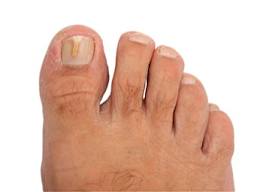
Diet and Candidiasis
Some time ago he came to me for inquiries, the girl told me her turbulent story so that we, as professionals, bet on health, shed light on her unfair situation.
He told me about his desperate journey with countless specialists who only seemed to prescribe various medications, in addition to subtly stating that one of the factors in his symptoms may have been poor hygiene.

His diagnosis: Candida Albicans and Depression. He suffered from physical exhaustion, stomach inflammation, poor digestion, headache, agony, dizziness, water retention, nervousness, hoarseness, nasal congestion, vaginal itching, hunger for sweets, insomnia, psoriasis, etc.
It has been seven years since I personally suffered from something related that caused me depression for a whole year, when the symptom of cystitis appeared repeatedly after menstruation and candidiasis occurred immediately and thus in a vicious circle … And my curiosity about all these questions was surprisingly satisfied when a book called Chronic Candidiasis by Cala Cervera fell into my hands.

Desperately have to suffer from situations like this, in which only we feel dirty (as if it were not enough to wash every day, please, that we are in the 21st century, who has no soap and running water ?), as if it were a problem … True, girls, the fact that the health care system often does not have, cannot or is not interested in giving us a solution, but she really sold the right and left her long list of pills (whose significant benefits lie in daylight), and in case the “magic pill” does not exist, it is called “idiopathic” (of unknown cause) until something is prescribed.
Nowadays, many experts have found that following a certain diet with certain restrictions allows the immune system to normalize, restructure the intestinal flora and restore vitality.
I remember the shocking phrase that the girl I was talking about at the beginning said to me, and it stuck in my head:
Sorry to die inside!
Cándidas compete with hormones by binding to hormone receptors in cells, causing a catastrophe in the hormonal system, as well as problems such as premenstrual symptoms, infertility, endometriosis, etc. (1)

Candida transforms the physiology and anatomy of the gut as they multiply in it. They pass from yeast to fungal mycelium. In a fungal state, it produces highly invasive rhizoids (or very long roots) that penetrate the mucous membrane. Thus, substances (toxins, poorly digested proteins, etc.) penetrate into the blood, which can act as antigens that dramatically alter the immune system, as they cause intestinal permeability. And this, in turn, impairs cellular food receptors, causing malabsorption and leading to malnutrition .. As with foods that contain anti-nutrients such as wheat and other grains, soybeans and legumes, as stated by Lauren Cordaine: Lectins and saponins.
However, although the origin of everything occurs at the intestinal level, it usually only manifests itself as a vaginal yeast infection or nails.
Usually the diagnosis is: hypochondriacal disease, localized infection, depression, anxiety … not including candidiasis. Thus, and therefore, Prozac, Seroxat or Anxiolytics are prescribed.
There are many people who have not been diagnosed
Yeast is present in every human body and lives in harmony with us shortly after our birth. They are found in the skin, digestive and genitourinary systems. Its main functions are to adhere to a certain amount of heavy metals so that they do not enter the bloodstream, decompose carbohydrate residues, are poorly digested, our intestines and its pH are balanced along with bacteria. In this way, we keep this yeast in check with the help of our intestinal, vaginal flora and immune system.
- Sugar or carbohydrates: The main support for Candida. In addition to direct feeding, sugar and flour cause high blood glucose levels where they are also fed.
- Tap water: fluoride suppresses the immune system and chlorine is designed to destroy our intestinal flora
- Pregnancy. During this stage, progesterone levels rise, causing the endometrial glands to produce glycogen, which promotes the growth of vaginal yeast. On the other hand, high progesterone levels can cause insulin resistance, causing excess blood glucose and promoting candida growth.
- Stress. Cortisol production suppresses the immune system, raises glucose levels and destroys the intestinal bacterial flora.
- lack of hydrochloric acid and digestive enzymes block the digestion of food in the usual way, causing intestinal fermentation and putrefaction. This creates irritating substances for the intestinal mucosa, contributing to the imbalance of the intestinal flora and the proliferation of our outright friends / enemies.
- Nutrient deficiency. To maintain a healthy immune system, certain amounts of nutrients are needed to maintain healthy digestive secretions and regulate glucose and hormone levels. Candida uses their advantage to breed in their imbalance.
- Antibiotics, cortisone and synthetic sex hormones (tablets). Antibiotics destroy the bacterial flora in the gut, but do not destroy it. This makes them grow without any microorganisms that control them. On the other hand, cortisone suppresses the immune system, and synthetic hormones, among other things, destroy certain nutrients (such as vitamin B6) that are vital to a healthy immune system.
To weaken them, we must make them “starve”
 Remove:
Remove:
- Foods and foods that contain sugar or sweet tastes (sugar, saccharin, honey, dextrose, syrups, soft drinks, tomato cans, morning cereals, pastries and pastries). , desserts, ice cream, etc.). Preferred by Cándidas.
- Fruit.
- Dairy products, including yoghurts.
- Alcohol.
- Yeasts love bread, pizza, bouillon cubes.
- Potatoes, mushrooms and mushrooms, courgettes and sweet potatoes.
- Fermented foods such as vinegar, tempeh, soy sauce, miso, tea.
- Flour (rice, pasta, bread, etc.)
- Legumes, peanuts and pistachios.
Highlight our high volume food for vegetables, meat, fish, seafood and eggs.
The dietary changes we need to make in addition to the inclusion of certain supplements such as fungicides, probiotics, vitamins and minerals in the various phases, according to some experts such as Cala Cervera.
- Candidas relaxation phase
Antifungal, digestive enzymes and / or betaine hydrochloride (1 month) - Elimination Phase Cándidas
Caprylic Acid, Gold Seal, Grapefruit Seed Extract, Garlic, Oregano Oil, Undecylenic Acid (there are brands that provide a lot of everything) - Balance Phase Ingestion of 1 to 10 billion Bifidobacteria distributed throughout the day, just before meals.
The most commonly deficient nutrients are vitamin C, group B (especially vitamins B6, B5 and B3), calcium, magnesium, zinc, chromium and essential fatty acids of the Omega-3 family.
The dose will generally be:
- Vitamin C, 1000-4000 mg.
- Vitamin B1, B2 and B3, 100 mg.
- Vitamin B5, 500 mg.
- Vitamin B6, 200 mg.
- Vitamin B12, 100-300 mcg.
- Folic acid, 400-800 mcg.
- Magnesium 400 mg.
- Zinc, 15-60 mg.
- Chromium, 200-600 mcg.
- Omega-3, 800-3000 mg.
(Make sure your B vitamins and chromium are yeast-free.)
Once the infection subsides, the intestinal flora is balanced and the patient receives a good dose of nutrients, it is convenient to inject certain nutrients to restore the intestinal wall. The most effective at this stage are vitamin A (7500-20000 units), Vitamin E (100-1000 units) and L-glutamine (500-1500 mg).
This process can take 3-8 months and a lot of patience is needed, as sometimes symptoms can get worse, raising doubts about treatment.
Some of the conclusions that a sick person makes clear after all this will be about how bad the diet is for the Neolithic, where it leads us to chronic conditions with various symptoms, and finally:
WE are what we eat
You will find a resurgence of vitality and fitness with a reduced fat index, along with recovery.
My experience is like yours will be at some point, so it might help, or I hope so …
A natural greeting!
